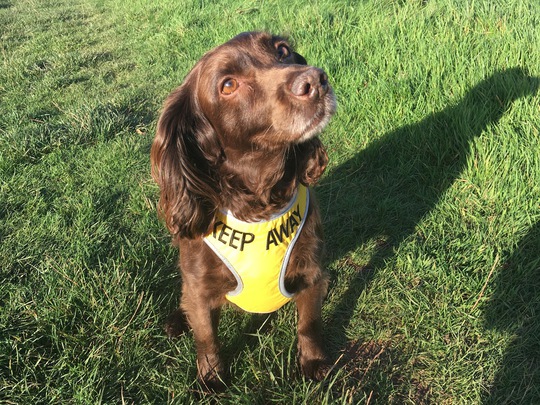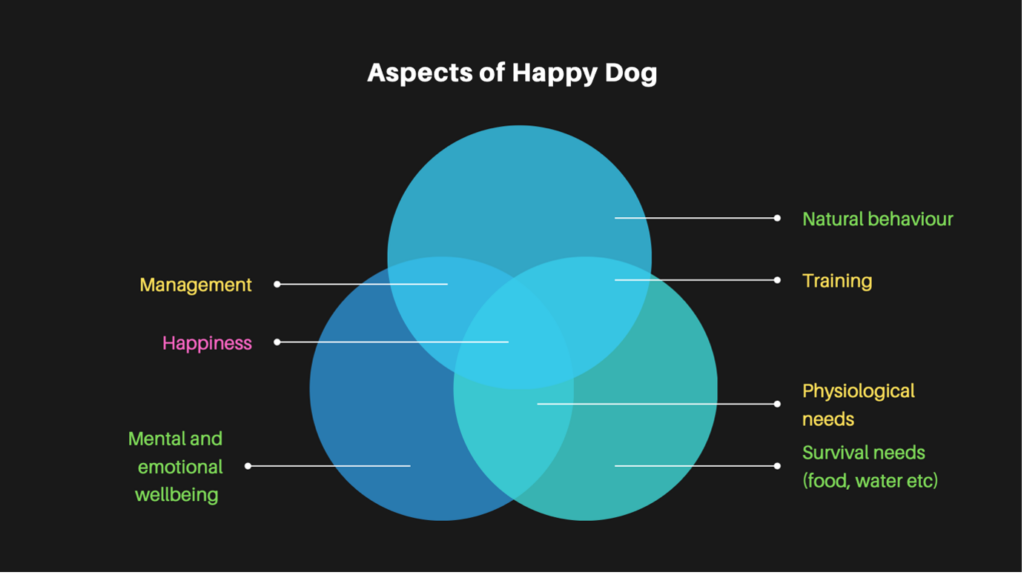
When your dog has behaviour issues, use kind methods to help resolve them
If you have ever owned a dog, you know how unique wonderful they are. Some dogs never have any behavioural issues and take everything in their stride, however for many owners this isn’t the case.
Behaviour problems can occur at any stage of a dog’s life and sometimes you have to go the extra mile to help them. There is such a vast amount of information out there that it is sometimes difficult to know what to do and often the advice is conflicting.
The importance of compassion for dogs with behaviour issues is the need for relief from a heightened emotional state. This could be over-excitement, fear or frustration for example and it is important to understand is that these are expressions of relief seeking behaviours. For example a dog who is afraid of other dogs may bark and lunge at them as they go past. This gives him relief from what he is afraid of because they do not approach.

Ask yourself, what is this dogs emotional experience that is triggering the behaviour?
As your dog’s main caregiver and best advocate for your dog, you need to learn to recognise your dog’s emotional experience. Then not put the dog in that situation in the first place (management) and build a strategy to help your dog’s emotional response (training).
See your dog’s behaviour as a barometer of self-regulation and as you do this, you understand more about what is your dog experiencing and what are they trying to communicate. Looking at a dog’s behaviour is understanding how they internalise and process emotions which in turn link to self-regulation or deregulation.
Behaviour Training
A good example of how a human could internalise what is taught to them is if they get caught speeding, get a fine and through processing what is learnt, then no longer speeds. An example of someone not internalising would be if they got caught speeding and slams on the breaks every time they saw a speed camera. Here they have not learnt to internalise, but understand the consequence.
When you start to look at behaviour in this way you realise how enormous this topic is.
Strategies for the training and management of canine behaviour issues
Caring for a dog with a behaviour issue can involve a holistic and multi angled approach including a combination of training, management and sometimes medication prescribed by your vet.

Caregiver burden
It can really help to understand that your dog is simply having a hard time as well as you. Fitting your life around them and always being on the lookout for potential triggers can be hard work but in reality, your dog is struggling too and that is why we need compassion. Sometimes this can affect our own mental health and therefore important we get support for the bigger picture.
There is no magic wand or quick fix for behaviour issues, however there is a very successful approach which is to look at the dog first and observe the following:
How does your dog process information?
How does your dog explore its environment?
What are its needs, criteria and preferences?
What is it’s learning style?
Good observation skills are paramount to recognise the mechanics which will be your foundations within the behaviour modification plan.
There are many potential causes of a behaviour problem, including genetics, lack of socialisation, trauma (emotional and physical) or a bad experience so as our dog’s caregiver, do not beat yourself up. The root cause may not have been anything to do with you. If the behaviour has come on gradually over time, reach out to your vet or a behaviourist who only uses reward-based training methods for support and advice. If you have noticed a sudden change in behaviour, always consult your vet to rule out any medical or pain related issues.
Conclusion
There is no quick fix for behaviour issues and it will need time, compassion and understanding of all aspects of life which make a dog happy. The response the dog has to a certain trigger may be embarrassing, annoying or frustrating to you but remember that the dog is experiencing something and they are trying to communicate something.
In the human world our dog’s live in, some of these behaviours are not acceptable by us or sometimes by law, therefore we need to find compassionate ways to help our dogs have better emotional responses in order to co-habit with us.
Do not forget that we put a lot of pressure on our dogs living the way we do and what is normal behaviour to them may not be normal to us. Our expectations also are often misaligned with what is appropriate for a dog. They are more intelligent and faster learners than people sometimes expect.
Look at your dog as an individual and observe how your dog processes information, adapt your teaching style to suit them and work towards providing relief for the dog and dog owner through a support system. Remember your dog isn’t the problem, the trigger isn’t the problem but how your dog feels about the trigger is. Don’t judge a behaviour see it as an expression of self.
Need help? Fill out our contact form here.
If you have any concerns about your dog’s behaviour and you would like help, please do not hesitate to contact me. Our dogs deserve compassion and understanding.
Adelaide Stewart-Jones BSc (Hons) IMDT
Dog Behaviourist and Accredited Trainer
Email us on info@theconfident-k9.com








Comments are closed